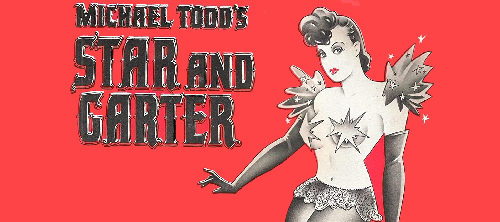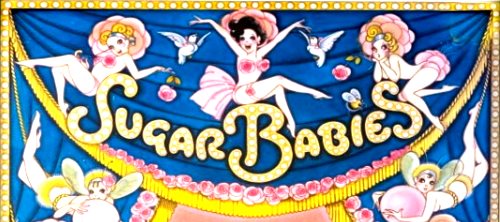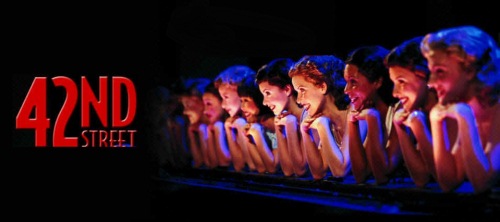Pas de biographie disponible.
Compositeur Musique additionelle Librettiste Parolier Metteur en scène Chorégraphe Producteur création Producteur version

Musical
Musique: J. Fred Coots • Paroles: Al Dubin • Dolph Singer • Livret: Leo Donnelly • Paul Gerard Smith • Production originale: 1 version mentionnée
Dispo: Génèse Liste chansons
Genèse: In theme and presentation (but not in quality), the critics compared White Lights (a self-described “unique musical comedy of Broadway”) to such recent nonmusical hits as Broadway (1926) and Burlesque (1927), and even to the recent flop Footlights. But not for an instant did anyone think White Lights was unique, and it quickly joined the season’s parade of fast-folding failures. The story looked at the world of nightclubs and Broadway, and the New York Times noted there wasn’t any “novelty” in the show’s clichéd characters: the blonde singer Polly, aka Jean Paige (Marian Marschante, who during the short run was succeeded by Gertrude Lang, who a month earlier had played the leading lady Babette in the flop Half a Widow) is from a good family and doesn’t belong in “this kind” of work; the “noble-hearted youth” Danny Miles (Sam Ash, who was succeeded by Sam Wren) is in love with Polly and is “God’s gift to the songwriting business”; the nightclub hostess Flossie Finch (Rosalie Claire) has what is “technically known as a heart of gold” about “two feet below her auburn tresses”; and a butter-and-egg man has lustful designs on Polly and is all too willing to help her up the ladder of show-business glory. So, the moneyman backs a big Broadway show that stars Polly, and during the premiere she collapses when she realizes Danny is in the audience and has heard her perform a “sacred” number he had written for her and her alone, one never intended for anyone’s ears but hers. But the Times reported that a brief coda “let it be known that everything’s going to be all right.” In many respects the evening was a series of presentational numbers rather than plot or character songs. There were seven unnamed specialty acts, and the Times indicated that at one point in the first act the action halted and gave way to a twenty-minute floor show at the nightclub The Monastery, which included dancers, contortionists, and “ballad and wah-wah singers.” And the second act depicted both rehearsal scenes for a Broadway musical and scenes from that musical during its opening night performance. H.H. in Brooklyn Life and Activities of Long Island Society cautioned that “everything” in the production “reminds one of something one has heard or seen before,” and the music was “undistinguishable from the tunes associated with innumerable undistinguished musical shows.” But Marschante was “certainly very pretty, even if her coyness is somewhat forced,” and Claire could “sling slang and swear like the army in Flanders, and she does it very thoroughly.” The Brooklyn Daily Eagle noted that “you might want to see White Lights,” and warned that if you did “you had better hurry before the moving van backs up.”
Résumé:
Création: 11/10/1927 - Walter Kerr Theatre (Broadway) - représ.

Film
Musique: Al Dubin • Harry Warren • Paroles: Livret: Earl Baldwin • Production originale: 1 version mentionnée
Dispo: Résumé Génèse Liste chansons
Genèse: C’est le seul film qui met en vedette Al Jolson et Ruby Keeler, qui étaient mariés à l’époque. Il a été tourné aux studios Burbank à Hollywood avec des décors conçus par le directeur artistique John Hughes. "Go into Your Dance est sorti" en Grande-Bretagne sous le nom de "Casino de Paris". Des années après la sortie initiale du film, la carrière de Jolson avait été revivifiée après la sortie du film de Columbia Pictures en 1946, "The Jolson Story". Warner Bros a profité du succès de ce film pour resortir "Go in Your Dance" l’année suivante. Une nouvelle ouverture a été été ajoutée, ce qui a donné à Jolson la possibilité d'apparaître cette fois seul en haut de l'affiche. Un prologue écrit pour assurer au public que le film a eu lieu en 1935 a aussi été ajouté. Aucun autre changement n’a été fait.
Résumé: Al Howard a peut-être été une star à Broadway, mais plus aucun producteur ne veut encore le recevoir. Il semble qu’il fuit au Mexique chaque fois qu’il veut provoquer la fermeture d'un show, ce qui fait perdre de l’argent aux producteurs. Quand sa sœur Molly ne trouve plus de travail à Al, elle le pousse à former un duo avec la talentueuse Dorothy. Il récoltent un grand succès dans un night-club de Chicago. Cela pousse Al à vouloir ouvrir son propre club à Broadway. Il emprunte de l’argent à un gangster pour l'ouvrir. Et le gangster veut que Al fasse son duo plutôt avec sa femme, Luana…
Création: 20/4/1935 - *** Film (***) - représ.

Revue
Musique: Gypsy Rose Lee • Doris Tauber • Harold Arlen • Harold Rome • Irving Berlin • Irving Gordon • Jimmy McHugh • Lester Lee • Will Irwin • Paroles: Gypsy Rose Lee • Al Dubin • Al Stillman • Harold Rome • Irving Berlin • Irving Gordon • Jerry Seelen • Johnny Mercer • Sis Willner • Livret: Production originale: 1 version mentionnée
Dispo: Liste chansons
Sous la direction du maire Fiorello H. LaGuardia, le commissaire des licences de la ville de New York, Paul Moss, n’avait pas renouvelé les licences des théâtres qui présentaient des numéros de strip-tease, mais cela n’a pas empêché le producteur Michael Todd de se lancer dans le Vaudeville avec une revue somptueuse qui incorporait de vieux numéros de Burlesque avec les traditionnels strip-tease. Bien que les critiques ont mentionné que le spectacle n’était pas pour les enfants et que le deuxième acte était tout à fait (dirons-nous) révélateur, apparemment les filles ont gardé suffisamment de pastilles à mamelons pour assurer que le Music Box Theatre conserve sa licence pour les dix-huit mois prospères durant lesquels Star et Garter s'y est joué.
Genèse:
Résumé:
Création: 24/6/1942 - Music Box Theatre (Broadway) - 609 représ.

Musical
Musique: Jimmy McHugh • Paroles: *** Divers • Al Dubin • Dorothy Fields • Ralph G. Allen • Livret: Harry Rigby • Ralph G. Allen • Production originale: 2 versions mentionnées
Dispo: Génèse
The show consists of "traditional material ... routines going back 50 to 60 years. It contains standard songs such as 'Don't Blame Me' and 'I Feel a Song Comin' On', interspersed with newly created musical numbers, including 'The Sugar Baby Bounce' ". The show had burlesque "tropes" such as the swing number, the sister act, the fan dance, the vaudeville dog act. It was all fast and funny and it ended with a patriotic number...with the entire company in red, white, and blue with a flag background and Miller as the Statue of Liberty."
Genèse: Sugar Babies opened on Broadway at the Mark Hellinger Theatre on October 8, 1979 and closed on August 28, 1982 after 1,208 performances. Staging and choreography was by Ernest Flatt, with sketches directed by Rudy Tronto, musically directed by Glen Roven, scenic and costume design by Raoul Pene Du Bois, lighting design by Gilbert Vaughn Hemsley, Jr., vocal arrangements and lyrics by Arthur Malvin, additional vocal arrangements by Hugh Martin, Ralph Blane, and orchestrations by Dick Hyman. The revue starred Mickey Rooney in his Broadway debut, Ann Miller, Scot Stewart, Tom Boyd, Peter Leeds, Jack Fletcher, Jimmy Mathews, Bob Williams, Sid Stone, Michael Davis and Ann Jillian After the original stars left, successors included Juliet Prowse, Anita Morris, Joey Bishop, Eddie Bracken, Jeff Dunham and Rip Taylor. The revue subsequently had a short-lived National tour which starred Carol Channing and Robert Morse, from August 1980 through November 1980. The Bus and Truck Tour starred Eddie Bracken and Jaye P. Morgan (who was succeeded by Mimi Hines) and ran in 1982. The 2nd National Tour, in 1984 and 1985, reunited Rooney and Miller.
Résumé:
Création: 8/10/1979 - Mark Hellinger Theatre (Broadway) - 1208 représ.

Musical
Musique: Harry Warren • Paroles: Al Dubin • Livret: Mark Bramble • Michael Stewart • Production originale: 14 versions mentionnées
Dispo: Résumé Synopsis Commentaire Génèse Isnpiration Liste chansons
42nd Street, une comédie musicale écrite en 1980, est une célébration des claquettes des comédies musicales des années 1920 et 1930
Genèse: Producer David Merrick "took a huge gamble with his $3 million production based on the 1933 Warner Brothers film musical", as "only one other show had made the transfer from original movie musical to the stage -- 'Gigi,' a flop in 1974."[1][2] He felt audiences once again were ready to embrace the nostalgia craze started by the successful revivals of No, No, Nanette, Irene, and his own Very Good Eddie several years earlier, and augmented the familiar songs from the film's soundtrack with a liberal dose of popular tunes from the Dubin-Warren catalogue. According to theatre historian John Kenrick, "When the curtain slowly rose to reveal forty pairs of tap-dancing feet, the star-studded opening night audience at the Winter Garden cheered…Champion (who had no tap training) followed this number with a series of tap-infused extravaganzas larger and more polished than anything Broadway really had in the 1930s." Original Broadway) In June 1980, the musical premiered in out-of-town tryouts at the Kennedy Center for the Performing Arts in Washington, D.C. After six previews, the Broadway production opened on August 25, 1980 at the Winter Garden Theatre, eventually moving to the Majestic and then the St. James, closing after 3,486 performances. (Frank Rich called this a sign of the "shift of power" on Broadway, as the show had to leave the Winter Garden to make way for Cats and the Majestic to accommodate The Phantom of the Opera.) The original cast included Jerry Orbach as Julian Marsh, Tammy Grimes as Dorothy Brock, Wanda Richert as Peggy Sawyer, and Lee Roy Reams as Billy Lawlor. Replacements later in the run included Barry Nelson and Don Chastain as Julian, Elizabeth Allen, Dolores Gray, and Millicent Martin as Dorothy, and Lisa Brown and Karen Ziemba as Peggy. The show's designers, Robin Wagner (sets), Theoni V. Aldredge (costumes), and Tharon Musser (lights) were the same team who had designed the original Broadway production of A Chorus Line. The musical is the 12th longest runnning show in Broadway history, as of December 2010. This Tony Nominated wardrobe, designed by Theoni V. Aldredge, is on display at the Costume World Broadway Collection in Pompano Beach, Florida. However, the opening night triumph was overshadowed by tragedy. Following a 5 minute standing ovation, Merrick went onstage and stated, "It is tragic…Gower Champion has died." He went on to explain that Champion had died of cancer just hours before the performance, "when he said that Mr. Champion had died, there were gasps and screams." The producer had advised only Bramble of Champion's death and managed to keep the news a secret from the cast (including Richert, the director's girlfriend), crew, and the public prior to his announcement. 42nd Street proved to be not only Champion's last show but Merrick's final success. Merrick lived until 2000, but, as described by Anthony Bianco, 42nd Street "was his last big hit, his swan song." West End - 1984 The West End production opened at the Theatre Royal Drury Lane on August 8, 1984. The career of teenaged Catherine Zeta-Jones, a chorus member in the 1984 West End production, was launched when a vacation and an illness felled both the actress portraying Peggy Sawyer and her understudy on a night one of the producers happened to be in the audience. Zeta-Jones filled in and was impressive enough to be cast permanently in the role shortly afterward. Broadway revival - 2001 Bramble revised the book for and directed the Broadway revival, with choreography by Randy Skinner (dance assistant for the original production). It opened, after 31 previews, on May 2, 2001 at the Foxwoods Theatre (formerly the Ford Center for the Performing Arts), where it ran for 1,524 performances. The cast included Michael Cumpsty as Julian, Christine Ebersole as Dorothy, Kate Levering as Peggy, and David Elder as Billy. Meredith Patterson, who made her Broadway musical debut in the chorus and was the understudy for the role of Peggy Sawyer, took over the role in August 2001. Todd Lattimore, who was a swing and understudy took over the role of Billy. Other notable replacements included Patrick Cassidy and Tom Wopat as Julian and Shirley Jones and Beth Leavel as Dorothy. UK Tour - 2007 The Broadway revival production, by UK Productions, toured the UK in 2007. The cast included Paul Nicholas as Julian for the first part of the tour, later replaced by Dave Willetts, Julia J Nagle as Dorothy, Jessica Punch as Peggy and Ashley Nottingham as Billy.
Résumé: "42nd Street" est l'histoire d'une jeune actrice humble et naïve prénommée Peggy Sawyer qui est venue pour auditionner pour une nouvelle comédie musicale de Broadway. Malheureusement, à cause de sa nervosité, Peggy arrive en retard à l'audition et manque sa chance de joindre le chœur. Heureusement, Peggy a été remarquée par le célèbre metteur en scène, Marais Julien, et il donne à Peggy sa chance. Cependant, l'actrice principale vieillissante, Dorothy Brock, déteste rapidement Peggy. Le soir de l'opening night, Mlle. Brock tombe et se casse la cheville. La panique prend toute la compagnie, car le spectacle est vraisemblablement condamné à la fermeture, jusqu'à ce que l'on suggère que Peggy reprenne le rôle. En seulement trente-six heures, Peggy apprend vingt-cinq pages, six chansons et dix numéros de danse et devient une star.
Création: /7/1980 - Kennedy Center for the Performing Arts (Washington) - 3486 représ.

.png)
.png)




